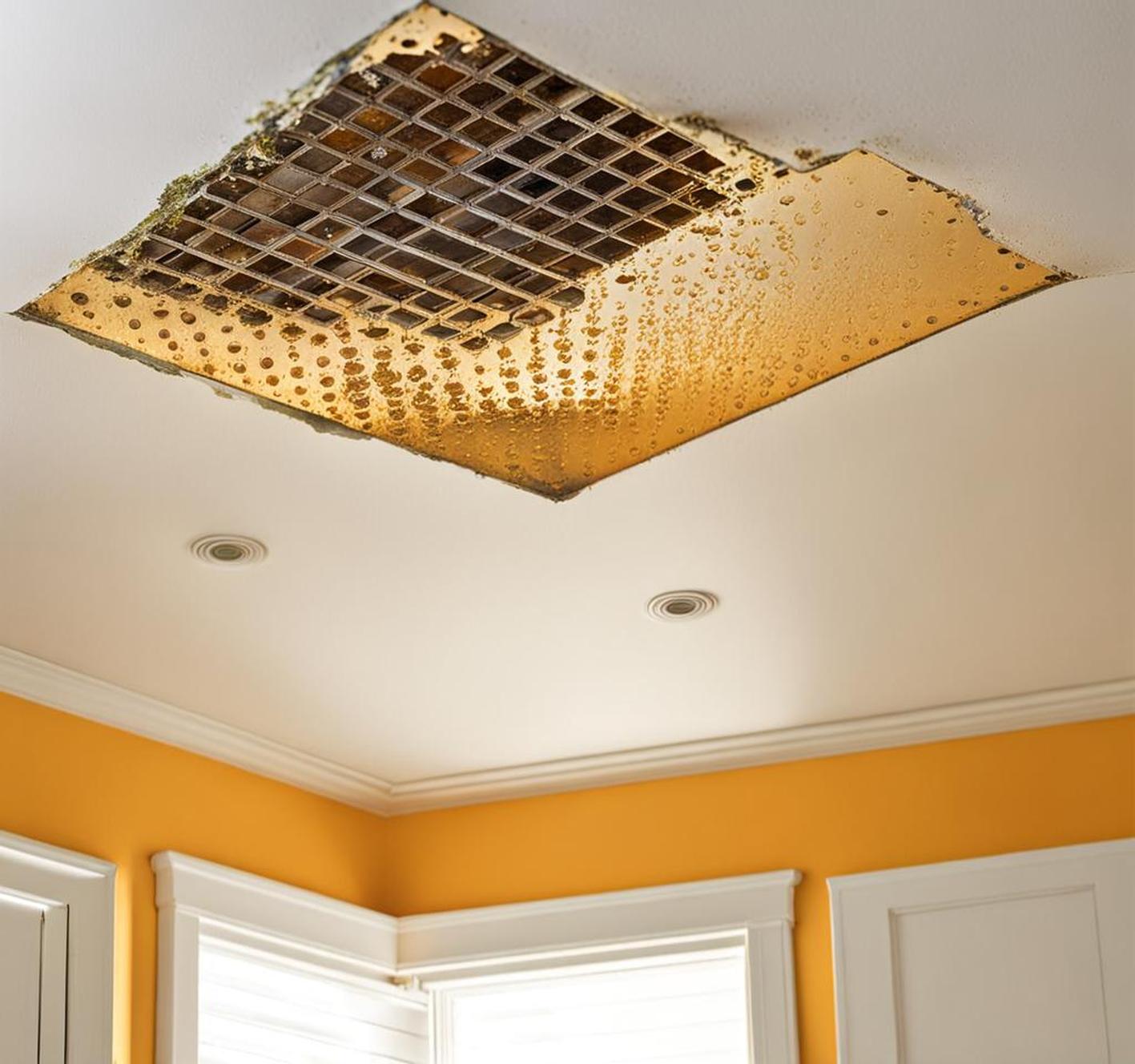Finding strange spots on your bathroom ceiling can be alarming. Are those dark circles simply harmless stains, or could they be something more sinister like mold? Identifying the problem is the first step to addressing it.
Mold that colonizes on bathroom ceilings is not only an eyesore but also a health hazard. Knowing how to identify mold and taking quick action to treat it will help keep your bathroom clean and prevent further growth from occurring.
Appearance of Mold on Bathroom Ceilings
Mold on a bathroom ceiling most commonly appears as circular black, brown, or green spots. It can range in color from dark brown to black to an almost neon green hue. The spots may start small, around the size of a quarter, but can grow and merge to form larger blotches. A key identifier is the distinctive musty, earthy smell mold emits. Unlike harmless stains, mold spots will not wipe away easily.

Mold may also manifest as a centralized, centralized stain or pattern of lines across your ceiling. This indicates mold growing out from a central moisture source. Mold can be fuzzy or slimy feeling, depending on the type present. It tends to thrive in corners but also near vents or fixtures where condensation accumulates.
Distinguishing Mold from Other Stains
It’s important to correctly identify mold versus other common ceiling stains that are benign. Soot or smoke stains tend to be lighter brown or grey and wipe away cleanly. Water stains appear as whitish circular rings and don’t have an odor. Dust creates streaky grey marks that easily disappear with cleaning. Only mold persists when wiped and emits that distinctive moldy smell.
Causes of Mold Growth on Bathroom Ceilings
Mold needs a food source to thrive. In bathrooms, that food source is often the drywall, grout, tiles, or wood becoming saturated with moisture. Common causes include:
- Humidity from hot showers accumulating on cold surfaces like tiles or ceilings
- Leaky pipes or plumbing fixtures
- Condensation dripping from poorly insulated exterior walls or roofs
- Clogged bathroom vents leading to excess moisture buildup
- Leaking roofs allowing water intrusion from above
If mold is only in one area, pinpointing the moisture source is key to preventing recurrence after removing the mold.
Health Dangers of Bathroom Mold
Inhaling airborne mold spores can trigger allergic reactions, asthma flare-ups, respiratory issues, and constant sinus congestion or headaches. Toxic black mold is the most hazardous, potentially causing neurological issues or lung bleeding if inhaled in large quantities over time. Mold also damages surfaces it colonizes, progressively eating away at materials as it spreads.
Removing Mold from Your Bathroom Ceiling
Small areas of mold can often be addressed without professional help. Combine water, mild detergent, and a soft brush to scrub away surface mold gently. Borax or anti-mold solutions are also effective. Ensure the area dries fully afterwards. Repainting with mold-resistant paint adds extra protection.
For larger affected areas beyond a few square feet, replacing sections of drywall and insulation is safest. Wear protective gear while carefully cutting out the mold-damaged material. Drying any underlying damp areas is vital before installing new drywall.
Improving ventilation can also help control humidity levels. Install a bathroom vent fan if lacking and run it during and after showering. Insulating exterior walls and attic spaces reduces condensation drips. Routinely cleaning and disinfecting all bathroom surfaces inhibits mold establishment and spread.
Preventing Mold’s Return
The key to preventing recurring mold is addressing the original moisture issue. Quickly fix any leaky plumbing or drips from condensation. Keep humidity under 50% by running fans and dehumidifiers. Clean bathrooms frequently using bleach-based detergent to kill mold spores. Check for leaks after heavy rains.
Monitor your ceiling after mold removal to ensure it does not return. Small spots can be recleaned right away. Recurrent mold likely means an ongoing dampness problem needing resolution before attempting removal again.
Calling a Professional
For extensive mold covering over 10 square feet, reaching into crevices or wall cavities, or suspected to be black mold, professional mold remediation is recommended. The Environmental Protection Agency provides a checklist for assessing if professionals are needed based on the mold’s extent and location.
Professionals have specialized tools to dry out damp areas in walls, kill mold on a molecular level, and prevent airborne spores during removal. They can also test mold species to assess toxicity risks. Although pricier than DIY removal, professionals may be needed for safe and effective elimination in severe cases.
Don’t ignore strange spots on your bathroom ceiling – identify if mold is silently lurking and take action. Knowing what mold looks like, why it grows, and how to remove it properly is key to protecting your bathroom’s health. With vigilance and moisture control, you can keep mold contained and enjoy a clean, worry-free bathroom environment.
